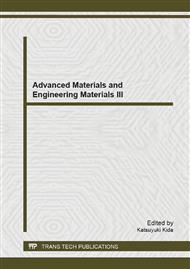p.512
p.519
p.524
p.528
p.533
p.539
p.543
p.550
p.554
Preparation of Ion Implanted Porous Silica Thin Film
Abstract:
The porous silica thin film was selected as thermal insulation thin film of uncooled infrared detector in order to reduce device thermal conduction loss. A new ion implantation manufacture method of porous silica thin film was studied in this paper. The porous silica thin films were prepared by ion implanted method and acid/alkali two-step catalytic sol-gel method respectively for comparison purpose. H+ and N+ ion mixing implantation technique adopted makes the gas bubble in the depth and shallow of silica thin film respectively, and one setting power can form porous structure with porous rate between 17% and 29%. By properly control the heat dealing process, gas bubble will format, expand, but not abrupt in the silica thin film. Sol-gel derived silica thin film has porous rate of 62.8%, but it cannot be used as substrate of electrode film and infrared thermal sensing film because of its irregular surface. The surface of ion implanted silica thin film is even and can be used as substrate, and its insulating performance could be further enhanced by etch off the thick silica substrate from back, after pyroelectric infrared sensing layer formed.
Info:
Periodical:
Pages:
533-538
Citation:
Online since:
February 2014
Authors:
Keywords:
Price:
Сopyright:
© 2014 Trans Tech Publications Ltd. All Rights Reserved
Share:
Citation:


